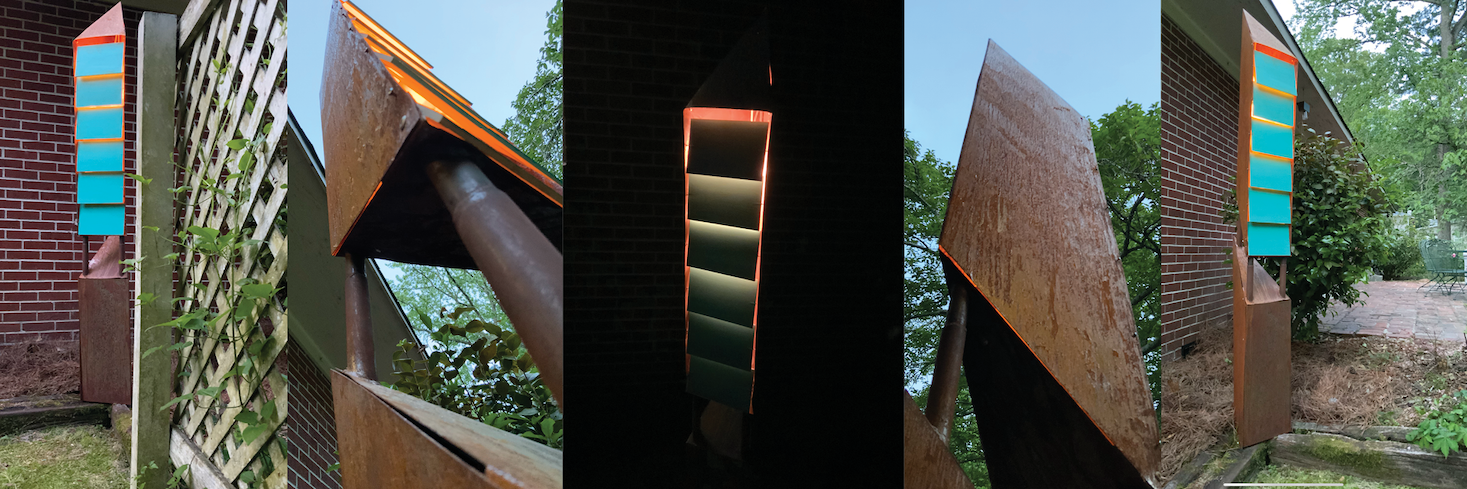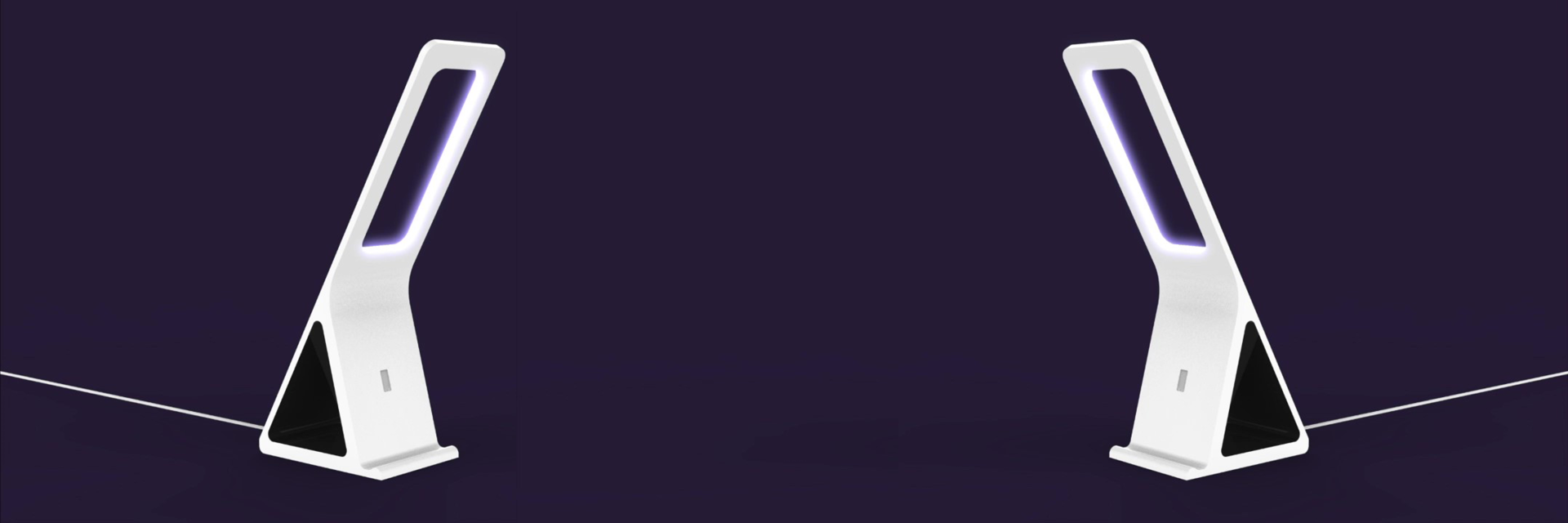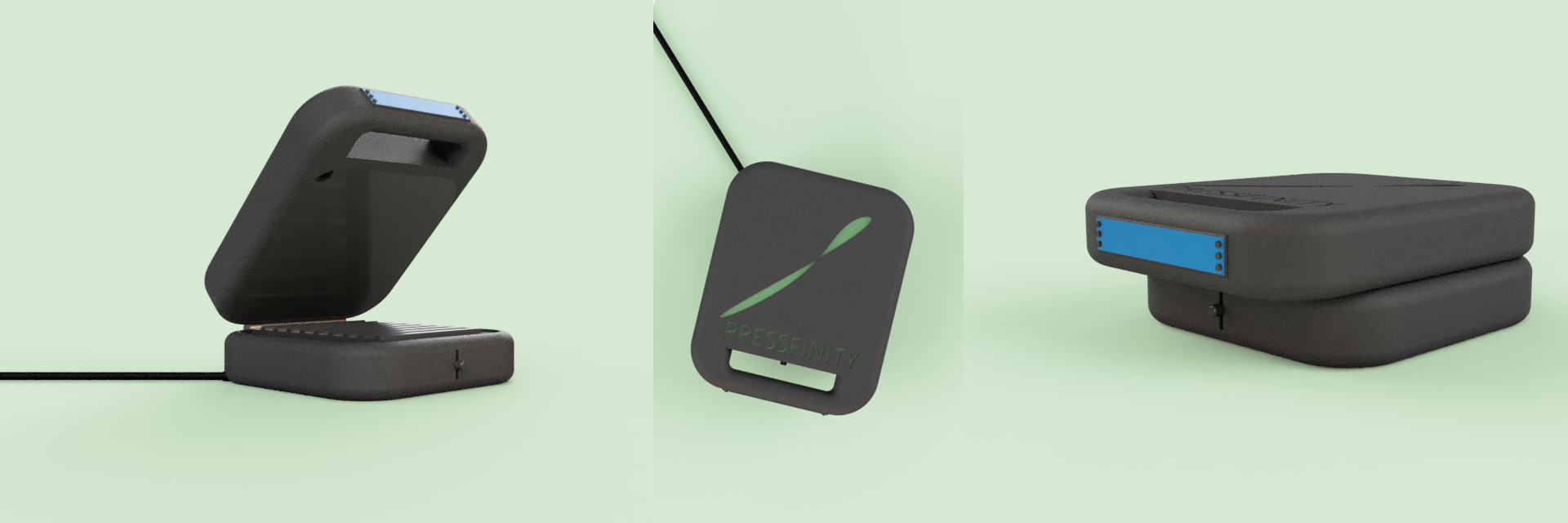
Spacer's Salvage
Class: Sophomore Studio | Instructor: Lisa Marks
The lamp project vastly improved my model making skills and has been one of my favorites in terms of my design process. Spacer's Salvage began with a focus on modem and geometric forms. I initially referenced the shape I iterated on as floating torch; an archaic light source turned modern. The sleek and angular geometry led me to search for settings that would support that form well. I landed on the largest observatory in the US, the Mauna Kea Observatory in Hawaii. From here, I researched what is required to illuminate a place that does not want much illumination in the first place. To no surprise, light pollution is a terrible combatant when trying to view our beautiful night sky. Some things that are necessary for observatory lighting includes a fully shielded light source, meaning no light is shining upwards towards the sky, and a color temperature under 2100 kelvin which can be seen in the final model. The aesthetic choices reflect the vibrant, natural landscape of Hawaii, with the rich orange rust and the contrasting aqua blinds. Instead of using methods to protect against the weathering of the lamp Spacer's Salvage embraces the natural effects of being an outdoor lamp. The rusting is completely natural using a bit of magic I learned from first year chemistry class and the wooden blinds are painted in a gradient to show the effects that light can have not just as a source of luminescence.

Light Sleeper
Group Members: Anna Goddard, Cole Chalhub
Class: Intro to Smart Products | Instructors: Wei Wang, Yaling Liu, Sang-Won Leigh
Light Sleeper is a smart bedside lamp that encourages the user to stay off their phone and get a good night's rest. This is accomplished by having the lamp illuminate at night and only shut off when the phone of the user is placed on the stand of the bedside lamp. Our phone can be a major distraction when attempting to go to sleep. 81% of people use their phone before falling asleep exposing their eyes to blue light which is found to lessen the ability to fall asleep and achieve deeper stages of sleep. The lamp consists of a RFID controller to detect the phone's presence on the stand, a photoresistor to detect day and night, and a Bluetooth controller to allow the RGB led light strip to change color and luminosity via app interface on the phone. The lamp remains off until it detects the light levels of night and then turns on. Once the phone is placed on the lamp it will change to the down setting, either off or low luminescence depending on your chosen settings in the app. If you remove your phone from the stand, the lamp will brighten giving you a reminder and after 1 minute it begins to change colors as a second reminder. Once morning arrives, the lamp will detect the sufficient light levels and shut off to save energy.

Pressfinity
Class: Sophomore Studio | Instructor: Lisa Marks
The health and wellness project challenged us with finding novel solutions for wellness issues challenging college age students. The social distancing guidelines caused me to increase my viewing for online cooking videos. I myself cook a bit at home but my living situation in college and other factors cause me to rarely if ever cook for myself. I am not the only one though; 10% of all college students will never cook a meal in their undergraduate career and 40% do not feel like they have sufficient control over their nutrition. My aim was to make a multi-purpose, streamlined device that can allow for the most useful cooking functions all in one device. Pressfinity is modeled as a panini press but allows for a myriad of different applications. This is accomplished through an interchangeable plate system that allows for the cooking of meat, sandwiches, waffles, pancakes, and much more. The tray can be removed to use both the top and bottom parts as independent hot plates for cooking in pots, pans, or woks. A very important part of this design is that it is streamlined to be inviting to use for someone who usually would not cook. The design incorporates a single LCD screen for the interface and can come at entry level with only a grill and skillet insert for beginners. Other insert plates can be sold separately as the user expands their cooking skills.